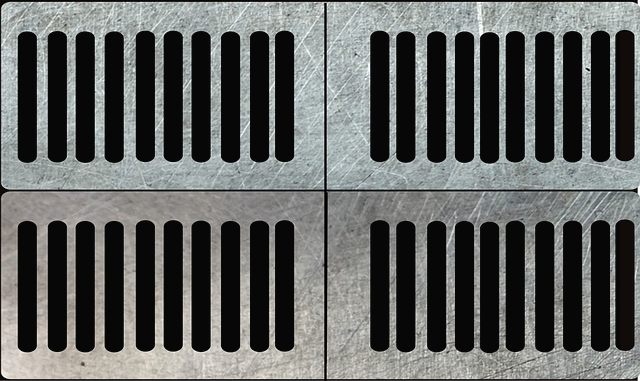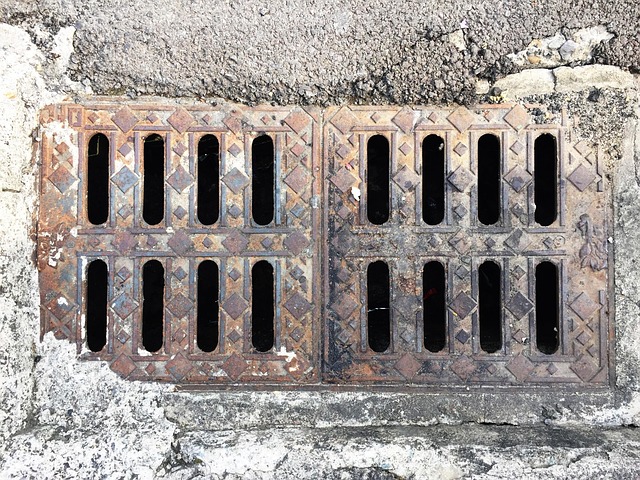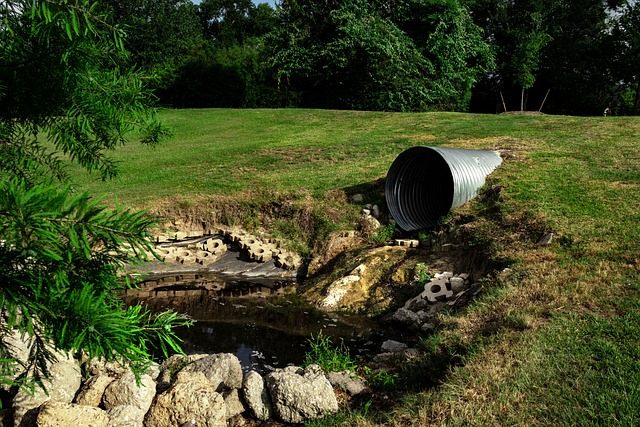Sewer line issues stem from corrosion, roots, aging, and obstructions. Regular maintenance and prompt action on warning signs prevent costly repairs. Replacing a sewer line involves assessment, excavation, cleaning, installing new pipes, and testing. Key factors include pipe age, clog frequency, structural damage, cost-effectiveness, and material selection (like PVC or HDPE). Comprehensive planning, careful excavation, and quality materials ensure long-lasting results. Post-replacement care includes regular inspections, clear drains, and preventing blockages to extend the sewer line's lifespan.
Sewer line issues can disrupt your home or business operations and pose serious health risks. Understanding common problems like corrosion, tree root intrusion, and pipe age is crucial for proactive maintenance. Recognizing signs such as slow drains, sewage backups, or mold growth is essential for timely repair or replacement. This comprehensive guide explores sewer line repair techniques, replacement factors, planning tips, material choices, step-by-step execution, post-replacement care, and preventive measures to ensure optimal sewer line performance.
Understanding Sewer Line Issues: Common Problems and Causes

Sewer line issues can arise from a variety of common problems and causes, often necessitating a sewer line replacement. One of the most prevalent issues is pipe corrosion, which can lead to leaks and cracks over time due to exposure to water and soil chemicals. Tree roots are another significant culprit; they can infiltrate pipes through small gaps, causing blockages or even ruptures as they grow. Improperly installed or aged pipes may also develop structural weaknesses, resulting in collapse or severe damage. Additionally, foreign objects like grease, trash, or sewer line obstructions can cause clogs and subsequent pressure buildup, ultimately damaging the pipeline.
Regular maintenance and inspection are crucial to identifying these issues early on. Homeowners should be vigilant about potential signs of trouble, such as slow-moving drains, strange smells, or noticeable water damage around the property. Prompt action can prevent more severe sewer line problems that may require costly emergency repairs or even a complete replacement.
Identifying Signs That Indicate Repair or Replacement

Many homeowners often overlook the importance of regular maintenance until they notice issues with their sewer lines. Identifying problems early on is crucial to avoid costly and disruptive repairs or even complete sewer line replacement. Some common signs that indicate a need for repair or replacement include persistent clogs, slow-draining sinks or showers, and unusual odours coming from drains. If you’ve noticed these issues, it might be time to call in professionals who can inspect your lines.
Another telltale sign is the accumulation of roots in the sewer pipes, which can cause cracks and blockages. Over time, tree roots can infiltrate weak spots in the lines, leading to leaks and further damage. Additionally, if you hear gurgling sounds coming from drains or see water backing up into them, these are clear indications that your sewer system is struggling. Prompt attention to these warning signs can help prevent major sewer line issues and ensure a more efficient replacement process when necessary.
The Process of Sewer Line Repair: Techniques and Technologies

The process of repairing or replacing a sewer line involves several techniques and technologies designed to ensure effective and efficient restoration of this critical infrastructure. Initially, location and assessment are key. Professionals use advanced equipment like cameras and sonar to visualize and map the affected area, identifying the extent of damage and choosing the most suitable repair method. For smaller cracks or leaks, a common approach is relining, where a new pipe is inserted within the old one, reinforcing it with modern composite materials that offer high strength and longevity.
In cases of more severe damage, complete replacement might be necessary. This involves excavating access points along the sewer line to install new pipes made from durable materials like PVC or concrete. Modern technologies like vacuum excavation minimize soil disturbance and reduce the risk of secondary damage. Once the new pipe is in place, advanced sealing techniques are employed to guarantee water-tightness and structural integrity, ensuring the longevity of the repaired or replaced sewer line.
When to Opt for Sewer Line Replacement: Factors to Consider

When deciding whether to opt for sewer line replacement, several crucial factors come into play. Age is a significant indicator; as pipes age, they become more susceptible to damage and leaks. Older sewer lines, often made of metal or outdated plastic, may require replacement if they’re over 20-30 years old. Additionally, examining the frequency of clogs and blockages is essential. Persistent issues could suggest underlying structural problems that need addressing.
The extent of damage is another critical consideration. Inspect for signs of corrosion, cracks, or significant narrowing. If there are multiple repair sites along a line or severe obstructions, replacement might be the more sustainable option in the long term. Cost-effectiveness should also be evaluated, taking into account both immediate repair versus replacement costs and future maintenance savings.
Planning and Preparation for a Successful Replacement Project

Planning and preparation are crucial steps in ensuring a successful sewer line replacement project. Before any excavation begins, thorough assessments and surveys should be conducted to identify the extent of damage or wear and tear on the existing sewer lines. This includes using advanced technology like cameras to inspect pipes for blockages, cracks, or signs of corrosion. Once the scope of work is established, obtaining the necessary permits from local authorities becomes essential. Coordination with neighbors and utility companies is also vital to minimize disruptions during the replacement process.
Proper planning involves creating a detailed timeline, assembling the right team of experts, and selecting suitable materials for the replacement. It’s important to choose pipes that meet industry standards and are compatible with the existing infrastructure. Additionally, having contingency plans in place can help navigate unexpected challenges that may arise during excavation, such as harsh weather conditions or unforeseen damage to surrounding structures. Effective communication among all stakeholders is key to ensuring a smooth and efficient sewer line replacement project.
Choosing the Right Materials for Long-Lasting Results

When it comes to sewer line repair and replacement, selecting the appropriate materials is paramount for achieving long-lasting results. The right materials ensure the new pipe can withstand environmental factors like corrosion, erosion, and extreme temperatures, which are common in underground settings. High-quality PVC (polyvinyl chloride) and HDPE (high-density polyethylene) pipes are popular choices due to their durability, resistance to chemicals, and ability to maintain structural integrity over time.
In addition to pipe material, considerations should be given to jointing systems and sealing techniques. Modern technologies offer advanced jointing methods that enhance leak prevention and overall system longevity. These innovations include mechanical joints, which provide a strong, non-leaking connection, and advanced sealants designed to create an airtight barrier against groundwater intrusion and other potential contaminants. By choosing materials and methods backed by industry standards and proven performance, homeowners and professionals can ensure effective and enduring sewer line replacement.
Step-by-Step Guide: Executing the Sewer Line Replacement

Replacing a sewer line is a complex task that requires careful planning and execution. Here’s a step-by-step guide to ensure a successful Sewer Line Replacement:
1. Assessment and Planning: Begin by assessing the extent of damage or need for replacement. This includes examining the existing sewer line, identifying issues like cracks, breaks, or corrosion, and mapping out the route for the new line. Create a detailed plan outlining materials, equipment, timelines, and safety protocols to guide the process effectively.
2. Excavation: Once planning is complete, begin excavation at both ends of the damaged section. This involves carefully digging to expose the entire length of the sewer line, ensuring access for replacement. Use specialized equipment like backhoes or hydraulic excavators to minimize damage to surrounding areas and facilitate safe, efficient excavation.
3. Removal of Old Line: With the sewer line exposed, remove the old, damaged pipe thoroughly. Clean the area, ensuring no debris remains that could impede installation of the new line. Verify that the soil is stable and prepared for laying the new pipe.
4. Installation of New Line: Place the new sewer line, ensuring proper alignment and support. Use specialized tools to connect joints securely. Backfill the trench with suitable material, compacting it around the pipe to provide stability. Make sure all connections are watertight and the new line is properly supported by anchors or braces as required.
5. Testing and Verification: After installation, conduct thorough testing of the new sewer line. This involves checking for leaks, assessing water flow, and verifying that the line functions optimally. Once tests are passed, restore any disturbed areas, ensuring the replacement is complete to specifications.
Post-Replacement Care: Ensuring Optimal Performance

After a successful sewer line replacement, proper post-care is essential to ensure the new pipeline functions optimally and extends its lifespan. Homeowners should schedule regular inspections to monitor any potential issues or leaks. Catching problems early can prevent more extensive repairs down the line. Additionally, maintaining clear drains and avoiding pouring grease or large solid objects into the system is crucial. Simple precautions like these contribute to a well-maintained sewer line replacement.
Regular maintenance routines include checking for blockages, ensuring proper ventilation, and keeping an eye out for unusual noises or smells. By adhering to these care tips, residents can promote the efficient operation of their newly installed sewer lines, guaranteeing minimal disruptions and a more sustainable solution in the long run.
Preventive Measures: Maintaining Your Sewer Lines Long-Term

Regular maintenance is key to extending the lifespan of your sewer lines and preventing costly repairs or premature replacement. Homeowners can take several preventive measures to ensure their sewer systems remain in good condition over time. One effective strategy is scheduling periodic professional inspections, allowing for early detection of any issues like cracks, leaks, or blockages before they turn into major problems.
Additionally, homeowners should be mindful of what goes down the drain. Avoiding disposal of non-biodegradable materials, grease, and sanitary products is crucial to maintaining the health of your sewer lines. Regularly cleaning catchments and drains can also prevent clogs, while using eco-friendly cleaning products can reduce the risk of damaging pipes over time. These simple practices contribute significantly to the long-term health of your sewer line replacement efforts.
